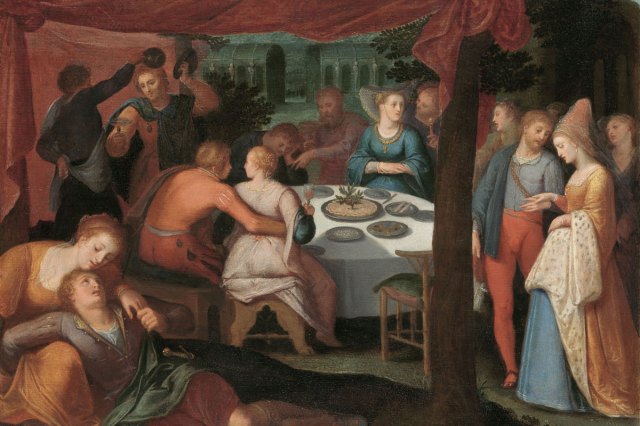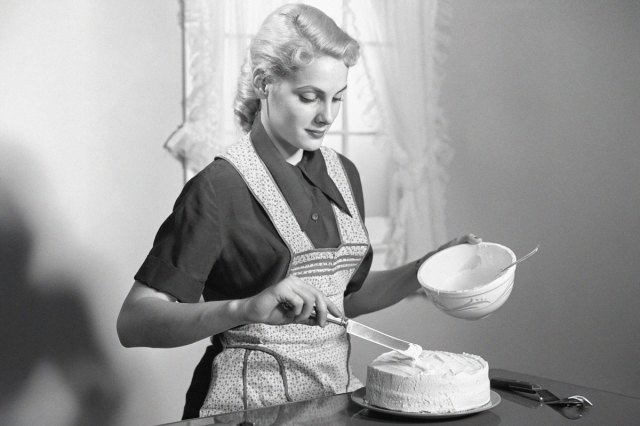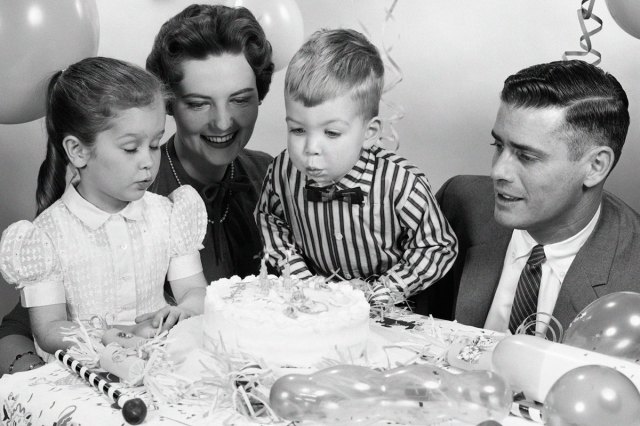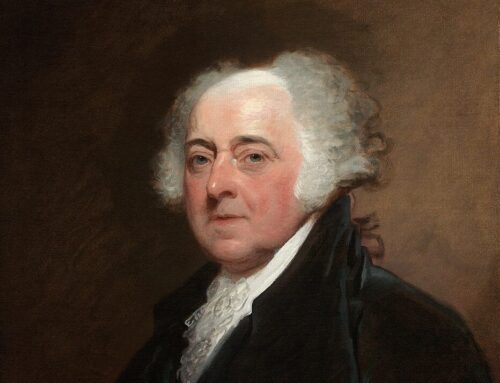Why Do We Eat Cake on Our Birthday?
September 27, 2025
By History Facts
Reprinted from History Facts
Few traditions feel as universal as gathering around a frosted cake, lighting candles, and singing “Happy Birthday.” While the ritual seems timeless, the story of why we eat cake on our birthdays stretches back thousands of years — winding through ancient temples, Roman banquets, German children’s parties, and American kitchens.
Cakes as Sacred Offerings
The word “cake” comes from the Old Norse kaka, but cakes in the ancient world looked quite different from today’s airy, sugar-laden desserts. Early cakes were dense, breadlike creations sweetened with honey, enriched with eggs or cheese, and flavored with nuts, seeds, or dried fruits such as raisins or figs. Archaeological and textual evidence shows that cakes were baked in Mesopotamia more than 4,000 years ago, and the Roman writer Cato described cakes wrapped in leaves and served at weddings and fertility rites.
But cakes weren’t just food — they were often sacred offerings. The Greeks presented honey cakes and cheesecakes to their gods, sometimes decorated with candles. One common offering to Artemis, goddess of the moon and the hunt, was the amphiphon, a round cheesecake topped with glowing candles meant to mimic the moon. Romans, too, baked cakes for religious purposes, including the libum, a mixture of cheese, flour, and egg baked on bay leaves as an offering to household gods. In these early forms, cakes linked the human and divine, symbolizing gratitude, fertility, or cosmic cycles.
Birthdays Enter the Picture
Though cakes were plentiful, birthdays were only inconsistently celebrated in antiquity. While there’s some evidence for these annual celebrations in ancient Sumer, they weren’t common in ancient Greece. The Romans were the first to mark personal birthdays, though only for men — women’s birthdays weren’t celebrated until the Middle Ages. Roman citizens honored relatives and friends with feasts, and men turning 50 received a special cake made with wheat flour, nuts, honey, and yeast.
Still, birthday cake traditions were limited and inconsistent during ancient times. For centuries, cakes remained associated with weddings, festivals, and offerings to the gods rather than private anniversaries.
The German “Kinderfeste”
The modern birthday cake owes its clearest debt to 18th-century Germany. There, children’s birthdays were marked with Kinderfeste — festive gatherings that included a sweet cake crowned with candles. Each candle represented a year of life, plus one extra for the year to come, a tradition that still survives. The candles were lit in the morning, replaced throughout the day, and finally blown out in the evening after dinner. Much like today, children were encouraged to make a wish as the smoke carried their hopes skyward.
This ritual blended ancient practices, such as Greek candlelit offerings and Roman birthday cakes, into something recognizably modern: a sweet centerpiece, flames to mark the passage of time, and the magical moment of blowing out candles.
From Luxury to Everyday Treat
Even with Kinderfeste in Germany, birthday cakes weren’t for everyone, as the food was considered a luxury treat. For most of history, cakes required expensive ingredients such as refined sugar, fine flour, and butter. They were labor-intensive to make and decorated with painstaking artistry. In the early 19th century, American cookbook author Catharine Beecher suggested apple bread pudding as a child’s birthday treat — simple, hearty, and inexpensive. However, children’s birthday parties weren’t common celebrations in the U.S. until after the Civil War.
The Industrial Revolution played a decisive role in democratizing cake. As ingredients became cheaper and more widely available, bakeries could mass-produce cakes and sell them at affordable prices. And for home cooks, birthday cakes reached new heights of extravagance by the early 20th century. In 1912, the popular Fannie Farmer Cookbook included a full-page photo of a “Birthday Cake for a Three-Year-Old,” complete with angel cake, white icing, candied rose petals, sliced citron leaves, and sugar-paste cups for candles. These elaborate confections reflected both rising prosperity and a more ambitious form of cake decorating.
Birthday Cake’s Symbolism
Today’s birthday cakes are often simple — such as a frosted sheet cake with a name piped across the top (a tradition that began around the 1940s) — but the symbolism has a long and rich history. Cakes mark abundance, indulgence, and festivity. Candles represent the passage of time, each flame a year lived, each puff a wish cast into the unknown. The act of gathering around the cake, singing together, and celebrating life’s milestones connects us across centuries to ancient rites of gratitude and hope.
From moonlit cheesecakes for Artemis to a 3-year-old’s angel cake in Fannie Farmer’s kitchen, birthday cakes tell a story about how humans celebrate time, community, and the sweetness of life. Every slice is part of a lineage that is both sacred and ordinary — proof that sometimes the simplest rituals carry the deepest history.











Leave A Comment
You must be logged in to post a comment.